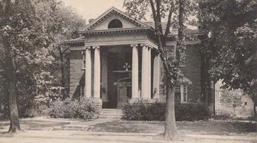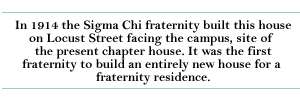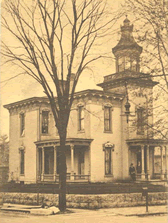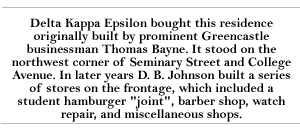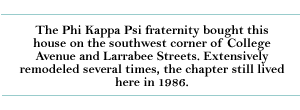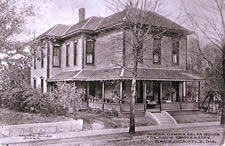
|
Social
fraternities, which had gained a strong foothold in Old Asbury,
grew even more important in the new DePauw University. By 1918 seven
new fraternities had been organized on the DePauw campus, though
only three proved permanent additions. These were Delta Upsilon
(1887), Sigma Nu (1890), and Lambda Chi Alpha (1915), the last of
which had originated as the Darsee (DePauw Rooming) Club in 1912.
The
attempt to keep spiking under control was one of the factors behind
the organization of both men's and women's Panhellenic societies
in the 1900s. As early as 1887 a men's Panhellenic banquet was held,
and in 1890 there was founded an organization called the Skulls,
composed of two senior members of each fraternity and later known
as Kappa Phi Omicron Kappa. A similar organization for women was
Ribs and Jawbones, also known as Gamma Tau Pi. Both eventually disbanded
without having served any very significant purpose. Kappa Tau Kappa,
founded in 1902, survived almost to the present as an important
interfraternity council. |
Depauw University e-history | E-mail comments to: archives@depauw.edu

